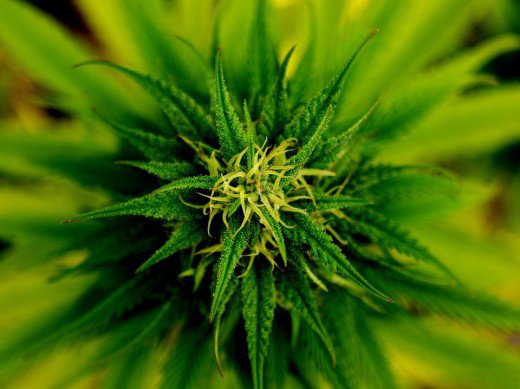Background
Medical marijuana, legalization, and the reduction of criminal penalties have been a topic of heavy debate for quite a while now. I started researching the benefits of marijuana in about 2011, and since then it’s clear that some state governments have caught on to many benefits. In this article, I’d like to sum up some of the overall benefits that legalization for medical and industrial use can provide. For now, I’m going to try and avoid the topic of legalization for recreational use, because I find it to be somewhat irrelevant considering the many uses this plant has outside of simply getting high.
Despite the vast progress this nation has made, there are still vehement critics of cannabis in civilian life, as well as in state and federal government. For example, in my own state, North Carolina, several bills have come up trying to bring medical marijuana to the area, however all have been shot down. This article is for those people.
History of Marijuana
- 6000 B.C. Chinese eat hemp seeds as food
- 4000 B.C. Chinese began to use hemp fiber as a textile
- 2727 B.C. Chinese discovered the medical use of cannabis
- 1500-500 B.C. Sacred Hindu text, Atharva Veda, cites hemp as one of the five sacred plants. It was used in medicine and rituals, making offerings to the god Shiva.
- 900 A.D. Hemp use spreads throughout Arab nations and scholars begin debating the pros and cons of eating cannabis.
- 1100 A.D. Smoking hashish (compressed cannabis stems and resin) becomes extremely popular in Arabia.
- 1600 A.D. Hemp was grown for fiber in new American colonies such as Port Royal, Virginia, and Plymouth.
- 1840 Medical preparations are made and sold with Marijuana throughout the United States
- 1906 The Pure Food and Drug Act passes, regulating all products containing alcohol, cocaine, opiates, cannabis, and more.
- 1937 Marijuana Tax Act is passed, prohibiting the trade of cannabis without paying a transfer tax.
- 1970 The Controlled Substances Act is passed, creating the criminal classifications for drugs that we still use today. Marijuana is considered a Schedule I drug, carrying the most severe penalties.
- 1975 The Compassionate Use Act was passed by the FDA, which allowed completely legal use of marijuana for certain patients.
- 1996 Medical marijuana becomes legal in the state of California.
Medical Benefits
- Treatment of Glaucoma. Glaucoma is currently the leading cause of blindness in the United States. Marijuana, when ingested or inhaled has been shown to reduce the intra-ocular pressure (pressure within the eyeball). This study was conducted in 1978 and supported by the National Eye Institute. At that time it was proved to be just as effective as the medicines used for treating glaucoma at the time. Many will say that the medical treatment has improved since then, so there’s no need for marijuana. To that, I will say that marijuana has also become more potent in the last 30 years by about 10% in 2009, and was expected at the time to rise to around 16% in the five to ten years following.
- Treatment of Cancers and side-effects of chemotherapy. Side effects of chemotherapy treatment include nausea and vomiting. Synthetic derivatives of THC were created under the names Drobinol and Nabilone and have proved effective in various clinical trials, and were subsequently approved for use by the FDA. Another common side effect of chemotherapy is rapid weight loss leading to anorexia or cachexia. One study showed a 50% increase in appetite along with a 3% increase in weight after patients were administered Drobinol. Another side effect of cancer treatment is pain. Often times, patients are prescribed opiods to help cope, which are highly addictive and can cause more harm than good in a patient’s battle if withdrawal symptoms arise. A study conducted by the University of Arizona College of Medicine showed that THC helped with pain relief, providing six times the relief of codeine.
- Epileptic Seizures: A 2003 study conducted by Virginia Commonwealth University tested marijuana extract on epileptic lab rats, and it showed that no seizures occurred within 10 hours of administration of the THC. In 2014 in North Carolina, a law was passed allowing cannabis oil to treat epilepsy.
- Potential to slow the progression of Alzheimer’s. A study conducted in 2006 that was published in the journal Molecular Pharmaceutics discovered that THC slows the formation of the plaque in your brain that kills brain cells.
- Ease the pain of multiple sclerosis. As seen through numerous studies and shown in various documentaries, THC helps reduce the painful muscle contractions that come with the disorder.
Industrial Benefits
- In a three page article from Popular Mechanics Magazine, published February 1938, industrial hemp was touted as “The New Billion Dollar Crop”. If one was to remove the fiber bearing cortex from the rest of the stalk, you get fibers that are extremely durable, strong, resistant to decay, and versatile.
- This fiber can be used in these various industries: paper products, textiles, molded plastics, body care products, construction, livestock feed, animal bedding, nutritional supplements, essential oils, medicine, food, and more.
- In the 1920’s Henry Ford realized the usefulness for hemp in making plastic composite materials. He needed to create a composite that had potential to boost the economy and help out farmers in the depression, so seeing far ahead of his time, created a car body entirely out of plastic composite parts made from hemp and soy fibers. It allowed low weight, little wear on the tool steel making the parts, and no splintering in collision.
- Composite board is used in construction and is another potential use for industrial hemp. Traditionally fibers like flax, jute, and wheat are used to make the board. In fact, in European countries that the marijuana plant is legal, it’s been shown that hemp based fiber board is much stronger that boards made out of short fibers.
- The paper industry is massive by itself, and every single grade of paper on the market today can be made from hemp.
Economic Benefits
- The paper industry alone is a three billion dollar industry, and we currently get fifty percent of our pulp and paper products from China. Introducing American hemp into the paper industry will create jobs, domestic goods, and help prevent deforestation, as one acre of hemp can produce three to four times more usable fiber than one acre of forests or pine plantations.
- In Colorado, the legalization of marijuana is making around $3,000,000 in tax revenue each month, with an increase of 30% on the year (comparing June 2015 to June 2016). The creation of this industry has opened up 10,000 plus jobs in Colorado, and the reduction of the criminal penalty is estimated to save the state between $12-40 million each year. The Washington Post estimates Colorado’s revenue from the marijuana industry to be around one billion dollars this year.
- All of the products that hemp could be used for would bring numerous commercial jobs to U.S. soil and create revenue for each state that would allow it.
So Why Isn’t it Completely Legal?
With all of these benefits, you’d think it would be entirely legal, yet it isn’t. I’ll be doing an article completely dedicated to this topic soon, so keep your eyes peeled if you want my take.
News Moderator: Katelyn Baker 420 MAGAZINE ®
Full Article: The Case For Cannabis
Author: Staff
Contact: (415) 234-1396
Photo Credit: Pixabay
Website: Soapboxie















